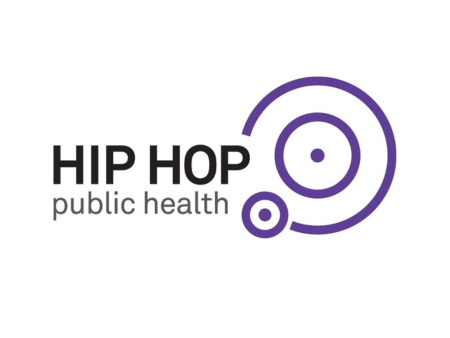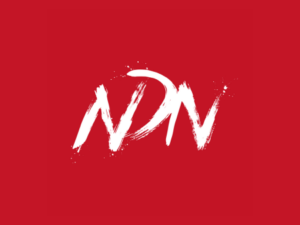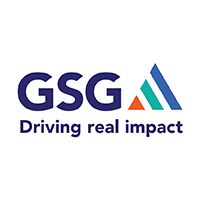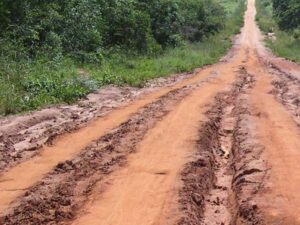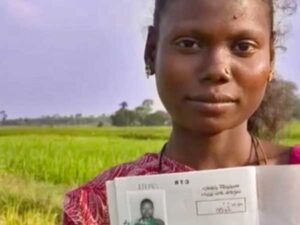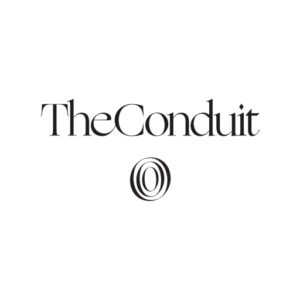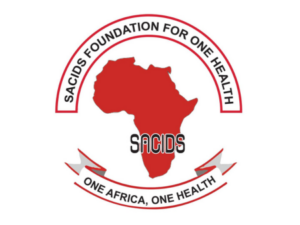Hip Hop Public Health (HHPH) uses hip hop tracks and videos to approach health communication and behavior change among young people. HHPH created over 200 resources, and developed community-focused programs and partnerships to support the development of essential health literacy and disease prevention.
Lori Rose Benson of Hip Hop Public Health spoke with Ambika Samarthya-Howard on January 8, 2024. Click here to read the full conversation with insights highlighted.
Ambika Samarthya-Howard: Can you start by introducing yourself, your organization and your organization’s approach?
Lori Rose Benson: My name is Lori Rose Benson, I’m the CEO of Hip Hop Public Health (HHPH). We are a nonprofit that really is based in health literacy. What we do is we use the neuroscience of learning through music, particularly hip hop music, and combine it with evidence-based strategies to support health behavior change, all with the idea of improving health outcomes in communities that are underserved. Our target audience is primarily young people, the school age population, but our framework has a unique model of working with young people as almost like the community health workers for their peer group and their families. We call that Child-Mediated Health Communication framework and all that we’ve put together blends art and music and culture and science of learning through music which we call the Multisensory Multilevel Health Education Model.
We will look at pressing public health areas, health promotion or disease prevention topics and we’ll break it down so that young people can understand the information. We make sure that it’s accessible, that they have informed information to make more helpful decisions that could be accessible to them and those around them. Then, when we teach and share information through the modalities like music and songs and animated videos and music videos, it becomes really sticky. It helps capture attention, it can soften tough messages. Talking about things like stroke or colon cancer screenings for their parents or caregivers or even being more physically active and looking at making more helpful nutrition choices. When we combine things through music, A, it could soften the message. B, it makes it more approachable and attainable. C, when you connect it to a cultural form like hip hop music, it becomes really sticky.
Hip hop is the number one music genre, not just around the US but around the globe, in terms of consumption of music and streaming of music. Although we particularly started with hip hop because we are deeply and remain deeply focused in serving communities of color. We started in Harlem, New York City with the Black community in particular. You can learn a concept through music. When you think back to your first date, when you think back to a really pleasant experience, if there’s music, there was a song that was playing, you don’t even realize that you know all the words as soon as it comes on. If we could teach and use music for better public health education and health communication, we can have a better chance of solidifying best practices and also helping young people retain information, use information and then convey it to others and their families.
Ambika Samarthya-Howard: In terms of your process, do you create the content? I understand how it gets to the students, but I’m curious what your organization’s role is.
Lori Rose Benson: All of our music is original. There’s only one track out of the 200 plus resources that we have available. We make everything available for free because we want to take away barriers to access to quality evidence-based resources. We create everything. The way we start our process is we think about the health behavior change or the health information that we want to see out there.
Let’s talk about stroke for example. When this first started, Dr. Williams, our founder, who’s a neurologist at Columbia University in New York City and at Harlem Hospital, was seeing a huge disparity in terms of people coming into the hospital seeking care for stroke. I said, “Well, how could we get to those folks? Perhaps if we could teach young people the signs and symptoms of a stroke, they could have agency to act on it but then also share that with their family members.” What he did was he framed the evidence-based knowledge around an acronym. BE FAST. B is for balance, E is for eyes, F is for face, A is for arm like face is drooping, arm is slouching or no energy or no strength in the arm, S is for speech, slurred speech and T is for time, time to call 911. Instead of just telling folks, “Okay, BE FAST is this evidence-based acronym, we put it to song.”
Instead of just putting it to song, we were doing this original intervention in Harlem, New York so he reached out to Doug E. Fresh, the iconic beatboxer and Doug E. was like the mayor of Harlem as well. The first ever program, which started in the mid-2000s, even before the nonprofit started, came out of NIH grants that Dr. William had about stroke response and intervention. And so, Hip Hop Stroke was formed. Doug laid down the track, there was an incredible producer named Artie Green who helped work. While Dr. Williams laid out the messaging, Artie wrote the music, had the right sentiment, knew the target audience, wrote it for Doug. Doug added his interpretation while keeping the science; there was an iterative process.
We knew that we wanted to work with young people so there were focus groups with fourth and fifth graders in Harlem to test the messaging to see if they understood it, if they understood what the actions were. After creating the track we then created an accompanying animated video to go along with it, so then there’s another layer of receiving this information, not just from an auditory perspective but from a fun visual perspective. There was a comic book to go along with it that was very instructional. So, you had this multi-layered approach. It was really fun, it had the evidence base, it had the style of Harlem, it had the voice of Harlem and it was an incredibly successful intervention. And that’s really where all this work started back in 2005.
Ambika Samarthya-Howard: You work specifically with school age students, so I’m just curious how you choose something like stroke, or is that not right, do you just work with all types of groups?
Lori Rose Benson: Pre COVID, we primarily focused on childhood obesity. This all started around stroke, that work was then adapted to looking at childhood obesity prevention. If you look at our origins and what’s kind of interesting, around 2010, Mrs. Michelle Obama, former First Lady, was leading an effort called Let’s Move. It was a national US effort to increase physical activity and really tackle the youth physical inactivity and obesity crisis. Her team got wind of what Dr. Williams was doing and said, “Well, stroke is pretty cool and do you do anything around childhood obesity prevention?” When you look at those precursors like prevention versus intervention, it’s very similar. It’s about increasing physical activity, knowing how to exercise, understanding food and hopefully making food and beverage healthful choices. Then, the only difference was not to start smoking, which is the stroke prevention part of it. But he was already working on that.
What actually helped form, or was the precipice for us forming, the nonprofit in 2011 was a partnership with Mrs. Obama’s team and the partnership for a Healthier America nonprofit. A whole album was launched called the Songs for a Healthier America. Doug E. Fresh reached out to his friends, other socially conscious, health conscious artists like DMC and Chuck D and Ashanti and Jordin Sparks. We had our R&B hip hop adjacent family there too. Even Ariana Grande was on this album that launched in 2013 and it was a 19-song album accompanied with a few of the songs that had live action and animated videos. Everyone was like, “What’s next? What’s next? What’s next?” So, most of the focus of our work from 2011 through 2020 was really all about childhood obesity prevention and intervention. And that was our vision and mission statement.
Then COVID hits, all of our resources at the time were around physical activity, nutrition, self-efficacy, around those areas. COVID hits and we immediately realize that the communities of color that we serve and so deeply want to serve are being bombarded with myths and intentional disinformation. We said, “Well, let’s apply this evidence-based model to other areas,” which were really important at the time. Then we started literally working remotely. Artie had a studio in his house, Doug had a studio in his house. We started creating resources around hand washing, like those simple things that could mitigate respiratory diseases. We started with hand washing, mask-wearing, and then did a whole journey around COVID literacy. Since 2020, there are the areas that we really care deeply about continuing, physical activity and nutrition, and we also partner up with other organizations that want to better reach young people in communities that are underserved around strategies to help garner attention around pressing public health issues.
Ambika Samarthya-Howard: I’m curious how you measure success and how you know that your programs are successful?
Lori Rose Benson: As our advisory board member DMC would say, it’s tricky and it’s not sexy. It’s not a type of work, especially when it comes to generating support for funding, that you’re going to create something now and you see an immediate impact in a month or two months or even a year. What we do is about building health literacy and trying to support systems like school systems, any place where there is health education that’s taught. We know that, around the US in particular, there is a lack of quality health education or any health education. So, we work deeply with school systems, with organizations, summer camps and BioBuses and libraries and other community organizations to help infuse this into the culture of how we teach health education to make it fun, to make it more engaging.
There are some very specific programs that we have. We have an educator Health MC program that we just launched last year, which we should be able to have very clear metrics around the educators who are participating with us, what they’re saying about the program, how they’re sharing it. When we work with partners for example, we’ll do pilot implementation and dissemination studies as well. Our evaluation sort of backbone partner is the team at Columbia with Dr. Williams, but we also do work with other organizations. We did a whole intervention in Baltimore with our partners at Hopkins, at the Adolescent Center for School Health in the Johns Hopkins Bloomberg School of Public Health around helping teens advocate for themselves to get the vaccine when they didn’t have agency to get the vaccine and helping them teach their families why this could be important around COVID. So, for us, it’s a long game.
Ambika Samarthya-Howard: Do you track evidence based on how well they’re sharing your stuff and how their knowledge has increased, not necessarily on the rate of stroke or the rate of COVID or any results?
Lori Rose Benson: The original work around stroke was an intervention that did look at the rate of hospitalizations for stroke in that particular area and how that knowledge increased the treatment levels in that area because all of the elementary schools around Harlem Hospital were given that intervention. But yes, on a day-to-day basis, the way the nonprofit works is that once we have an evidence base that has been established through the research at Columbia and other academic partners, we are then about implementation and dissemination as wide as possible.
We also work with folks to adopt and adapt our resources. If there is something that needs to be even more culturally relevant, for example, when we were rolling out resources around COVID, we had different animated backgrounds for those that were in Baltimore versus those that were in Nevada so that it could be really, really culturally tailored. We want people to adopt and adapt what we do, we want to know and we want to work with folks to make it even deeper when it comes to the adoption.
Ambika Samarthya-Howard: What are some things that you tried that have not worked? What are some lessons you’ve learned along the way?
Lori Rose Benson: When you are talking with folks and particularly funders about supporting amplification of the work and they want to see an immediate change in a month. Behavior change takes time, health literacy is also one component of that. Being able to develop the knowledge and the attitudes and then the behaviors to take action, there’s a whole pathway to health behavior change. I think that’s the trickiest thing. There may have been some funders that we work with that were like, “We want to see numbers right now.” And for us, this is a really long game. It’s changing a fundamental approach to health education, it’s filling a gap that is dire in every community around this country. It’s challenging, especially as a relatively smaller nonprofit, we punch way above our weight class. People think we are much bigger than we are because we work with these incredible iconic artists and the amount of work that we have been producing, particularly since the pandemic, has been at a rate that incredibly surpasses what we were doing before the pandemic. We feel this urgency.
I guess the other thing is to know when to say no because we want to say yes, we want to say yes to any public health pressing need. One of the things that we are really focusing on for 2024, adding into the mix, is resources around mental health for young people, around healthy relationships, around mindfulness. I would say we would love to also create resources that educate around gun violence and gun violence prevention. It’s a matter of capacity.
Ambika Samarthya-Howard: Are there any lessons that you have from something you’ve tried that didn’t work that you would impart to someone else?
Lori Rose Benson: I would say there was something that we did that we thought didn’t work initially, but actually was working. We just didn’t do enough research in the space before we rolled it out. When we shifted and started doing resources to mitigate COVID-19 and we did hand washing in English and in Spanish, we never did Spanish resources before. They were also lovely and culturally relevant and with different artists so it was the right mix. Then, we did mask wearing. And then the next thing was, “Oh yes, the vaccine is coming out, let’s start a journey around vaccine literacy.” We thought everyone was like, “300 million views,” all this love for all of these resources when people were remote.
Then, I remember it was February 2021, Valentine’s Day weekend, DMC was the artist that was working with us around the COVID literacy resources. We created a series called Community Immunity and then we also created a Spanish version, Inmunidad Comunidad, and it started as five separate songs. Then, as things evolved we added on and added on as two shots became all of that. We launched on a Friday, it’s like Valentine’s Day. We’re framing our social media around love for each other and support and let’s get the shot and all of that. By Saturday, Sunday, DMC and us, we were getting an unbelievable amount of hate messages on Twitter, Instagram, all of that. Our board was like, “Did we offend the very communities we want to support?” DMC was getting email threats, he was supposed to do an interview with us on Monday on a national news network. His publicist said, “Please, no, no, no, stop with this community immunity stuff.” And he said, “You know what? Turn it off. Turn off the email, turn off your notifications. I’m doing this, this is important.”
What we realized was we were not prepared for the sophisticated cyber infrastructure in the anti-vax world, or the bot world. We were just not exposed to that and we’re just like, “Yeah, this is going to be great.” I mean, to the point where staunch disinformation folks were saying, “Oh, look at what’s going on out here” and making fun of what we were doing and saying some really serious things. We were not prepared for that. We had to really do more research to understand what was important in terms of this world of social media, how we can manage it and how we could best also support the artists that have put their reputations out there to work with us. We were really, I would say almost naive, that everyone’s going to say, “Oh, this is great, let’s support all of our communities getting the vaccine.” It was another tricky situation for sure.
Ambika Samarthya-Howard: What would you say, outside of funding and money, are some of your bigger challenges?
Lori Rose Benson: I’ll share something quite vulnerable for the organization and I think that is embodied in the name of the organization, Hip Hop Public Health. There are folks that just hear the organization, just the name and just dismiss it. For many, many years, even before the organization started, when Dr. Williams was doing all of this community-based participatory research, he had mentors that said, “What is this hip hop stuff? You’re never going to get tenure. Let this stuff go.” There was an organization that we did some major work with that when it came time to a press release did not want to include our full name in the press release. They wanted us to be called HH Public Health. Then, George Floyd was murdered and Breonna Taylor and others. Then, there was an influx of people that wanted to work with Hip Hop Public Health.
Now it’s almost like the word equity is becoming embraced in culture wars. Health equity, social justice, that’s been at the core of what we do from the very beginning and it’s always going to be our core. We’ve had previous board members that wanted us to change it like, “Maybe we should have more of a general, if it’s about an approach with music, why does it have to be called Hip Hop Public?” Hip Hop Public Health because this music was born in the Black community. It was really like the original social determinants of health communication. It was about speaking truth to what people were living with and seeing and experiencing as the Bronx was burning in New York City. Now in public health, folks talk about social determinants health, it’s the environments where we live and work and play and pray. Some of the things that people have control over and many things that they do not have control over. We feel really tied to that genesis, the birth of the organization. For us, Hip Hop Public Health, that’s going to stay in our name.
Last year was the 50th anniversary of hip hop. While there were many celebrations about it, there are also some folks that are like, “Oh well, we did a celebration around that hip hop thing, we don’t need to work with Hip Hop Public Health.” We are a public health education, health equity organization that harnesses the power of hip hop. We did have some interesting conversations over the last year about what it meant to celebrate. But also for us, what it means to look at the next 50 years and really center health and healing for a genre that started in the communities that are unfortunately still disenfranchised in many, many parts of the country.
Ambika Samarthya-Howard: Do you consider yourself, based on what you’re saying right now, a systems change orchestrator?
Lori Rose Benson: I think we are. I think we are radically re-imagining what it means for health education, for community health education. It is something that personally, I come from the education side of the street. Dr. Williams comes from medical public health. I used to oversee what became the Office of School Wellness Programs under the Bloomberg administration for the New York City Department of Education. For me, health education isn’t just a course, a semester, or a lesson plan. These are the basic rights and tools that we all need so that we can not just be successful during school but live healthy productive lives. So, thinking about how you could energize and empower communities and connect in a fun cultural way with deep, deep topics. We think that this is absolutely connected to systems change and a systems approach.
When we create our model, the multisensory, multi-level health education model, if you look at the graphic, it actually looks at the social ecological framework. It looks at young people in the center, their families, communities, the communities that they live in, the structures like schools and then also the policy. When we create resources, we want to make sure that it is aligned up and down. We may not be creating the policy but we want to make sure if we’re creating resources, it can support or nudge and that it could be realistic along that pathway. When we look at that, we then layer the art and then the science and then the culture on top of that. So, essentially yeah, I’m so glad that you asked that because we do see ourselves as system change leaders, although I think many folks will say, “Oh well, they’re creators and disseminators of information.” But how we’re creating and how it’s getting infused in lots of different community settings, like meeting people where they’re at, change happening at the speed of trust, on the ground, is so important for us.
Ambika Samarthya-Howard: In terms of systems change, what do you need from other actors in the ecosystem?
Lori Rose Benson: I mean, I love the word ecosystem, I think there needs to be an even more formidable, refined ecosystem. There’s so many people doing incredible work but not everyone is going to do everything. Being able to be more intentionally connected with those that are able to amplify, for those that are able to support, for us to understand what are the other pressing public health issues that we could be helpful with with other organizations and co-create. I think some of our most impactful resources that we’ve created and public health campaigns have been in partnership with others. For example, recently we did a whole series with the National Environmental Educational Foundation (NEEF). We love our acronyms in public health. NEEF was looking at the issues of adolescents and young adults who have asthma, who throughout their lives, their caregivers and the adults in their lives have been the ones managing their asthma. Now, they’re responsible for doing that and moving around the world. They found out about us and they had a little bit of funding, not a lot to do all that we wanted to do, but we felt like this was so important and we’ve got to figure this out. We ended up launching an entire series called EMPOWER, another acronym, which stands for environment and medication and so on, and created a whole animated series. But they had support and they have a huge mechanism through their collaboration with the CDC.
In terms of getting the word out it had a really wonderful reach that we probably may not have been able to do on our own. Being able to intentionally partner with one another, that’s what I love about being part of the Skoll network. It’s not just, “Oh, everybody kind of come together and have some wonderful experiences,” there are very intentional conversations, matchmaking and building up of those ecosystems. I think the more we do that and the more silos come down, the more effective everyone can be.
Ambika Samarthya-Howard: Where do you see your work going in the next five years?
Lori Rose Benson: We see the resources that we are creating all around the country. We see a global expansion as well. We see that ecosystem. We see that ecosystem where there’s an effective creation, distribution. During COVID, I think we learned a really valuable lesson about how it’s not just the information, it’s not just the message, it’s the medium, it’s the moment and it’s also the messenger. So much of what we’re doing is working with those trusted messengers within the hip hop community who are not the medical experts, they’re not the educators, they’re not the public health leaders. But for us to be able to continue to build that network. So, five years from now, we have dozens of artists of every decade of hip hop working with us, understanding the importance of their platform and the way that their voice can not only bring entertainment, but also critical health information to the communities that they care so deeply about and that are fans of them as well.
Ambika Samarthya-Howard: If someone wanted to do the work that you’re doing, what would be some advice you would give them, or insights you could share, now that you’ve been doing this for almost two decades?
Lori Rose Benson: I would say, “Well look, there’s an evidence-based model, the model that we have can be replicated in other places.” For example, there’s a team of researchers in the Czech Republic that have taken the model and that have adapted it and are working with their local artists and their style to do that in the Czech Republic. We’re excited about that.
I think patience and relationship building. Some of the most exciting things that we’re doing now, literally kicking off this month, have been in the making for two to three years. It’s the relationship building, it’s the trust building amongst other partners that when the timing is right, you can then take that next step. Sometimes it’s hard, especially when you feel the weight of an organization, feel responsible for staff and team, everyone’s livelihood and you want to continue to be successful, to continue to grow. I think having that patience and constantly being curious, asking the questions of your partners and continuing to stay the course even when things can get a little bit tricky.
Ambika Samarthya-Howard: Is there anything you want to add or any question you wish I asked you?
Lori Rose Benson: I would just love to say that for anyone who is listening or watching or reading, that everything that we create at Hip Hop Public Health is available for free. It’s at our website at hhph.org. We love to hear feedback and we’re excited when folks share and amplify this important work so we can have more young people and their families living more healthful, happier, connected lives.
Ambika Samarthya-Howard: That’s really cool. Thanks so much, Lori.
Click here to read the full conversation with insights highlighted.
Ambika Samarthya-Howard (she/her) is the Solution Journalism Network’s Chief Innovation Officer: She leads on innovation and technology, leverages communication platforms for the network strategy and creates cool content. She has an MFA from Columbia’s Film School and has been creating, teaching and writing at the intersection of storytelling and social good for two decades. She has produced content for Current TV, UNICEF, Havas, Praekelt.org, UNICEF, UNFPA, Save the Children, FCDO, Global Integrity and Prism.
* This interview has been edited and condensed.
Learn about other organizations that provide social innovations in health.

